

|
If you can see it and hear it on the Web, IE4 can get a copy for you. It's got connections, ya know? Nudge, nudge. Wink, wink. Let's start with the easy stuff. All these fancy words and letters you see before you...well, they can be yours. IE4 can nab any text you want and store it safely on your computer.
If the fancy images in a Web page don't interest you, tell IE4 to save only the text.
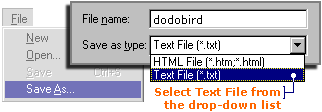
You can view the text you just saved by opening it in one of these programs:

Certain Web pages use frames to split up the content. For example, this page is actually two separate frames in IE4. The text-only heist that I showed you will not work with framed pages. If you don't believe me, try nabbing the text on this page. Betcha it won't work!
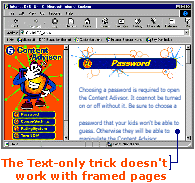
If you want to save all my lovely prose to show your students, you'll have to copy and paste this text into a word processing program. If you want to save text from a "framed" Web page, just copy and paste it into a word processing program like WordPad.
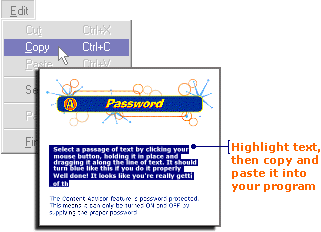
TIP Put your keyboard to work Real Net nerds use keyboard commands to copy and paste text. Instead of using the Copy command in the Edit menu, press the Ctrl key and the letter C key at the same time. To paste the text into WordPad, you can press Ctrl + V. If you didn't know already, these two keyboard commands work in almost all Windows programs. I know you'll be itching to make your own Web page soon. When you do, you'll be curious about HTML--the code that Net nerds use to make Web pages. Say it as the letters, H-T-M-L. If you call it "hit-mil", or something, everyone will know you're a newbie. To see the HTML behind this page:
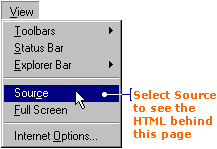
IE4 can also save the HTML code behind a Web page.
Note: IE4 doesn't save the HTML for "framed" pages.
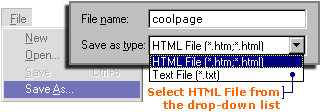
You can view the Web page you just saved by opening it in IE4.
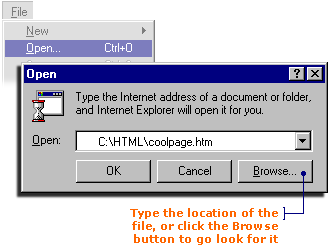
|